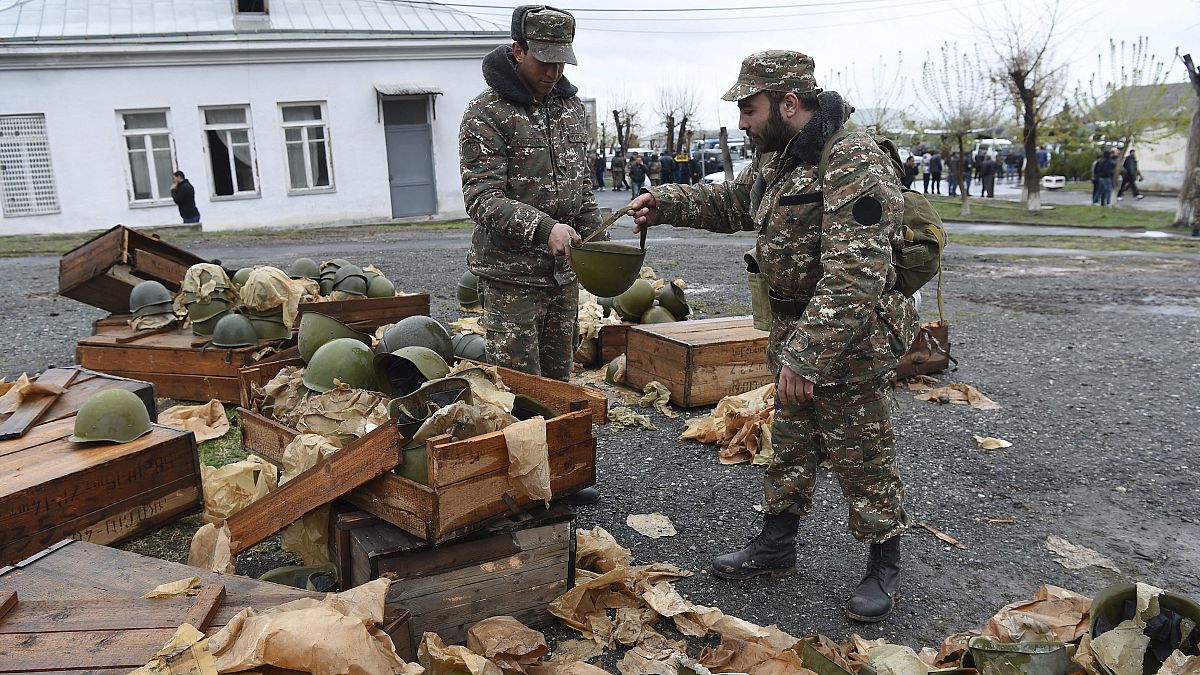Nagorno-Karabakh is a geographical area near the border between Armenia and Azerbaijan. It is a mountainous and heavily-forested patch of land that
Nagorno-Karabakh is a geographical area near the border between Armenia and Azerbaijan.
It is a mountainous and heavily-forested patch of land that sits inside the territory of ex-Soviet Azerbaijan.
Today the vast majority of the population of Nagorno Karabakh is Armenian.
Under international law, Nagorno-Karabakh is recognised as part of Azerbaijan. But the ethnic Armenians who make up the vast majority of the population reject Azeri rule. They have been running their own affairs, with support from Armenia, since Azerbaijan’s troops were pushed out in a war in the 1990s.
The conflict has been marked by controversies and atrocities on both sides. Our intention is not to cover every aspect but to give an accessible overview to those unfamiliar with the conflict.
If you wish to explore deeper you could read this analysis by the Stratfor intelligence group or this from GlobalSecurity.org or this from the Council on Foreign Relations

December 1-2 1987
A protest by the inhabitants of the Armenian-populated village of Chardakhly against the firing of the head of the village is suppressed by the Azerbaijani police.
February 13 1988
Protestors in Stepanakert, the centre of the Nagorno Karabakh Autonomous Oblast (NKAO), demand the re-unification of NKAO with the Armenian Soviet Socialist Republic (SSR)
February 20, 1988
An extraordinary session of the Nagorno Karabakh Autonomous Oblast (NKAO) Soviet of People’s Deputies passes a resolution to unify the region with Armenia. No representatives of Azerbaijan attended.
February 26, 1988
A large number of people rally in Yerevan in support of NKAO’s re-unification with the Armenian SSR.
February 27-29, 1988
Armenian population of the Azerbaijani city of Sumgait is forced out during a wave of violence. The causes of the trouble are disputed.
June 15, 1988
The Supreme Soviet of the Armenian SSR gives its consent for NKAO’s inclusion into the Armenian SSR, on the basis of Article 70 of the USSR Constitution. The equivalent body in Azerbaijan responded by rejecting the decision.
July 18, 1988
Th Presidium of the Supreme Soviet of the USSR rules that Nagorno Karabakh should remain part of Azerbaijan.
September 21, 1988
Moscow introduces emergency measures to restore order in NKAO.
August 1989
Azerbaijan starts an economic blockade of Armenia and Nagorno Karabakh. Tens of thousands are deplaced from their homes and many thousands die.
January 13-20, 1990
Many members of the Armenian community in Baku, the capital of Azerbaijan, flee the city as tensions mount. Soviet troops move in and scores die in the ensuing violence
January – June, 1991
So called “Operacia Kolco” (“The Ring Operation”) begins: Azerbaijani militia, supported by the Soviet military deports Armenians from villages in Northern Karabakh.
December 10, 1991
A few days before the official collapse of the Soviet Union, Nagorno-Karabakh held a referendum, where a majority of 99.89% voted for full independence from Azerbaijan.
Most Azeris in the region were unable or unwilling to vote.
Baku described the action as illegal and ended the autonomy Nagorno-Karabakh had enjoyed under Soviet times.
In the violence that followed, Armenia troops supported the breakaway movement as Azerbaijan attempted to restore its control. Around 25,000 people were killed and many times more forced out of their homes.
January 26, 1992
The Azerbaijani Army suffers a reversal near the village known to Armenians as Karin-Tak and Azeris as Dashalti.
February 25-26, 1992
The Khojaly Massacre, also known as “Khojaly tragedy” (or as the “Khojaly Genocide” by ethnic Azerbaijani) takes place. Anwhere between 160 and 613 civilians are killed by ethnic Armenians and Soviet troops from among the 7,000 inhabitants of Khojaly. A recent Turkish report claims thousands of buildings were demolished .
This, and other subsequent actions, effectively forced out significant portions of the Azeri population into refugee camps in Azerbaijan.
May, 1992
Armenian forces take territory forming linking Armenia with Nagorno Karabakh. They will extend these gains in the coming year. ### June 12, 1992
The Azerbaijani forces begin large-scale offensives resulting in the taking of the Shahoumian region, the northern part of the Martakert region, and the eastern part of the Askeran region.
April 1993
The UN Security council adopted the first of a series of resolutions calling for the withdrawal of pro-Armenian forces ### May 9-11, 1994
A Russian mediation team draws up a comprehensive ceasefire agreement. The defence authorities of Azerbaijan, Armenia, and Nagorno Karabakh sign the document. The agreement became effective on May 12, 1994.
A “demilitarized zone” is defined to limit conflicts. Both sides have crossed for attacks that have caused deaths since 1994.
- While a ceasefire has been in place since 1994, no peace treaty has been signed.
- The region is a strategic area for oil and gas pipelines.
SOURCES:
- Human Rights Watch
- Reuters
- Web site of Nagorno Karabakh Republic office in Washington Sumgait.info
- Chronology of the conflict prepared in August of 1990 by CIA
- Chronology prepared by the “Memorial” Society (Russia)
